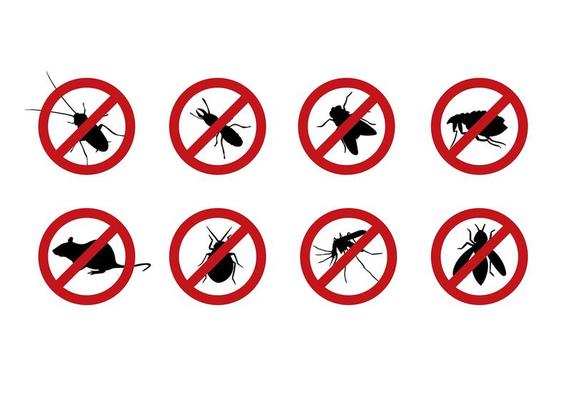Why Select Pest Control Lockhart for Your House Protection Needs
Exploring Problem and Therapy Approaches on the planet of Parasite Control
The landscape of insect control includes a myriad of difficulties, especially as invasions of common house insects continue to advance. By integrating precautionary actions with advanced management techniques, such as Integrated Insect Administration (IPM), home owners can much better safeguard their settings.

Typical Home Pests
When it comes to managing our space, recognizing usual household parasites is essential. These pests not only interrupt our convenience however can additionally present health threats and damage home. One of the most common house insects consist of ants, roaches, rodents, termites, and bed insects.
Ants, commonly seen foraging in cooking areas, can contaminate food and develop huge colonies. Rodents, consisting of computer mice and rats, can cause structural damage and bring illness like hantavirus and salmonella.
Identifying the signs of these pests, such as droppings, nests, or attack marks, is crucial for very early intervention (Pest Control Lockhart). Appropriate cleanliness practices, securing entrance points, and preserving a clutter-free setting work preventative steps. By determining these typical home insects and recognizing their behaviors, house owners can take proactive steps to alleviate invasions, guaranteeing a healthier living environment
Understanding Insect Infestations
Pest invasions can intensify promptly, transforming a minor aggravation right into a considerable issue if not dealt with promptly. Typical variables adding to invasions consist of inadequate sanitation, architectural susceptabilities, and seasonal changes that drive parasites inside.
Determining the type of parasite is important, as different types exhibit diverse habits and reproductive prices. For example, rats may develop nests in concealed locations while pests like roaches grow in damp atmospheres. Early detection frequently pivots on acknowledging indicators such as droppings, nibble marks, or uncommon sounds, which can indicate a trouble before it becomes extreme.
Ecological conditions also play an essential function in bug proliferation. Cozy, moist environments can assist in the fast growth of pest populations, while adjustments in landscape design or building and construction can accidentally produce conducive settings. Regular assessments and preventative actions are vital to mitigating the danger of problems. An enlightened approach to recognizing these dynamics prepares for efficient pest administration methods in the future.
Therapy Approaches and Strategies
Effective treatment approaches and methods are important for reducing insect problems and recovering a secure environment. A complex method is often best, including chemical, organic, and mechanical strategies tailored to the specific bug and the intensity of the problem.
Chemical therapies consist of the use of insecticides and herbicides, which can effectively get rid of parasites. Appropriate application and adherence to safety guidelines are crucial to decrease threats to people and non-target microorganisms. Integrated Parasite Monitoring (IPM) motivates the judicious usage of chemicals as a last option, counting instead on surveillance and limit degrees to determine intervention requirements.
Biological control approaches involve presenting natural predators or bloodsuckers to reduce pest populaces. This strategy is increasingly preferred, particularly in farming settings, as it promotes ecological sustainability.
Mechanical approaches, such as traps and obstacles, supply instant remedy for insects without introducing chemicals. Alternatives consist of sticky catches for pests or physical barriers for rats.
Eventually, the selection of treatment approach ought to think about the details parasite, the atmosphere, and potential influence on human health and wellness and ecosystems. A balanced combination of these approaches can properly handle infestations while advertising long-term pest control solutions.
Safety Nets for Homes
Proactively dealing with pest problems before they intensify is vital for maintaining a healthy and balanced home setting (Pest Control Lockhart). Implementing reliable safety nets can significantly reduce the possibility of invasions, inevitably guarding both your residential property and wellness

Correct landscape design also plays a crucial duty in avoidance. Maintaining bushes and trees cut away from the residence lowers you can check here the opportunities of insects finding their method inside your home. Ensure that water drainage systems are working effectively to avoid standing water, which can attract in insects and various other bugs.
Last but not least, routine inspections are advisable. Consistently inspecting for indications of insect activity enables early treatment. By taking on these safety nets, home owners can create an environment that is much less welcoming to bugs, thereby enhancing their general quality of life and reducing the requirement for comprehensive insect control interventions.
Business Parasite Control Approaches
An extensive technique to business insect control is important for organizations intending to keep a safe and hygienic environment. Efficient strategies include a combination of regular assessments, worker training, and the application of Integrated Insect Administration (IPM) methods.
Regular examinations make it possible for early detection of bug activity, permitting for prompt intervention. Businesses must create a regular timetable for these assessments, concentrating on high-risk locations such as kitchens, storeroom, and waste disposal websites. Staff member training is equally go to website important; team ought to be enlightened on the signs of parasite invasions and the importance of reporting them right away.
Implementing IPM practices helps mitigate insect concerns sustainably. This includes environment alteration, such as sealing access points and reducing clutter, as well as employing all-natural deterrents before considering chemical treatments.

Additionally, teaming up with an accredited insect control service provider makes sure accessibility to specialist understanding and sophisticated therapy alternatives. This collaboration can lead to customized insect control prepares customized to the details requirements of the organization, decreasing threats and improving general efficacy. Ultimately, a proactive and informed method promotes a pest-free setting, guarding both public wellness and service credibility.
Final Thought
To conclude, effective insect control necessitates a thorough understanding of typical household pests and their actions, coupled with targeted treatment approaches. Implementing safety nets Visit This Link along with therapy techniques such as Integrated Bug Administration and biological control improves the ability to alleviate infestations. Routine assessments and a mix of chemical and mechanical options better contribute to preserving pest-free environments. Inevitably, a well-shaped method to pest management is crucial for securing living spaces from unwanted trespassers.